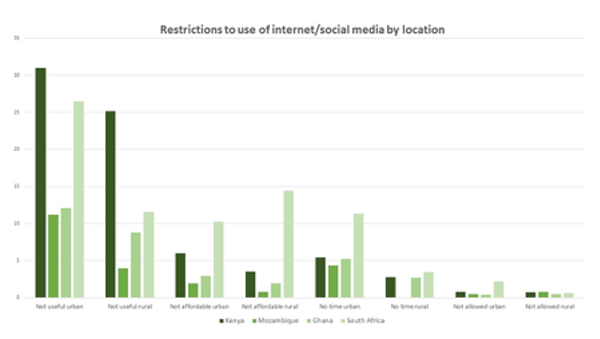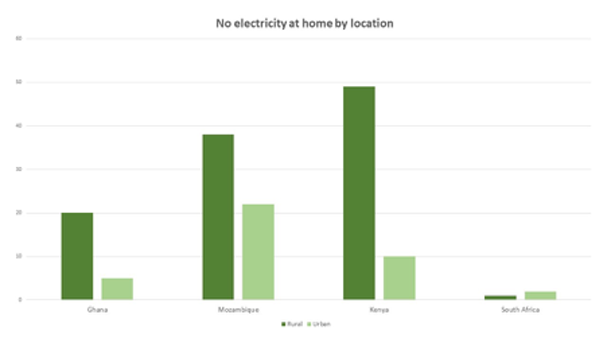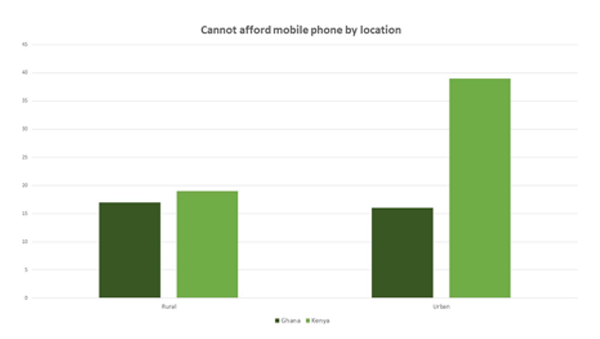Reasons for Uneven Digital Technologies
- By Sandiswa Mapukata
This is the second of three blog posts that will examine the relationship between digital technologies and work.
The Research ICT Africa 2017/18 Access Survey highlights a number of barriers to digital technologies. Lack of access to electricity at home often limits the use of digital technologies as individuals are unable to charge devices. According to the World Bank, access to electricity in Ghana is 82%, Mozambique 31%, Kenya 75%, and South Africa 91%. Lack of electricity as a barrier to the use of digital technologies especially affected Mozambican (31%) and Kenyans (35%) respondents. Hlatshwayo (2019) argues that difficulties in accessing services and infrastructure such as electricity highlight the significant structural barriers that limit the use of digital technologies. Being unable to afford a mobile phone is a significant problem that demonstrates how the accessibility of digital technologies largely depends upon access to devices. The spatial nature of this barrier is more apparent in Kenya, where 19% of rural-based and 39% of urban-based respondents reported being unable to afford a mobile phone.
Figure 4: Restrictions by location

Data source: Research ICT-Africa 2017/8 Access Survey
Privacy concerns were another barrier. Concerns were raised around the security of personal data when using digital technologies with respondents from Ghana, Mozambique, Kenya and South Africa reporting that these concerns were a barrier to their use of digital technologies. Mobile coverage does impact on whether individuals may effectively use digital technologies. Limited mobile coverage negatively impacts the use of digital technologies. In Kenya, the spatial nature of this limitation was more apparent than in the other countries sampled as 26% of rural-based and 2% of urban-based of urban-based Kenyans reported that no mobile coverage limited their use of digital technologies.

Figure 5: Restricted mobile phone use because of lack of electricity at home

Data source: Research ICT-Africa 2017/18 Access Survey
Not finding the digital technology useful is a significant barrier that demonstrates the empowerment stage of the digital divide as consumers cannot use digital technologies to empower themselves. Interestingly, 28% of Kenyans reported that this barrier hindered their use of digital technologies. Having no time to use digital technologies highlights other demands on an individual’s time (particularly household responsibilities) that negatively affect the individual’s ability to use digital technologies. In terms of future research considerations, it would be interesting to see how this affects female respondents in relation to their male counterparts, especially when we consider how the burden of household responsibilities disproportionately falls on women. Restrictions on the use of digital technologies by one’s parent/ guardian, life partner/spouse, etc. was a barrier that was most felt in Mozambique, Kenya, and South Africa.
Figure 6: Restricted mobile phone use because cannot afford mobile phone

Data source: Research ICT-Africa 2017/18 Access Survey
What these findings demonstrate is that various structural issues affect the use of digital technologies. Access to digital technologies is multifaceted. It is important not to individualise access to digital technologies as access (or the lack thereof) is often affected by structural factors that render access unequal.
Read the related Business Day Op-Ed


